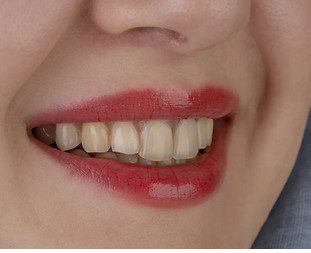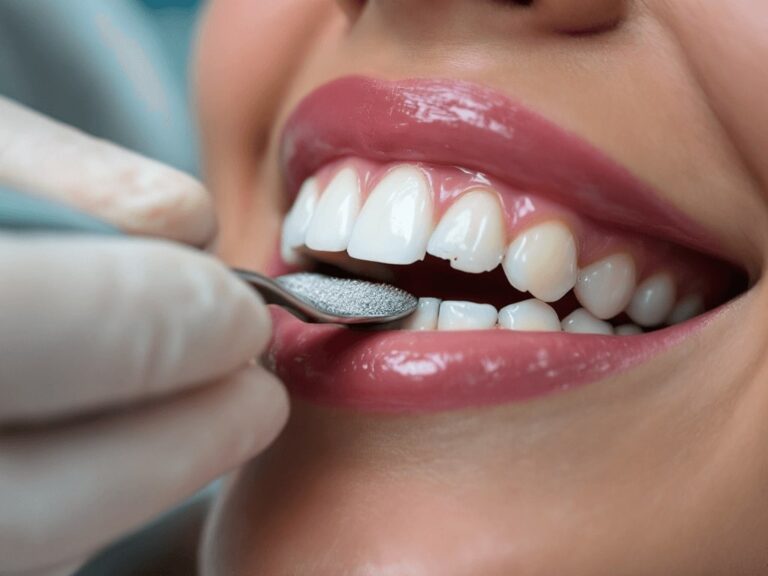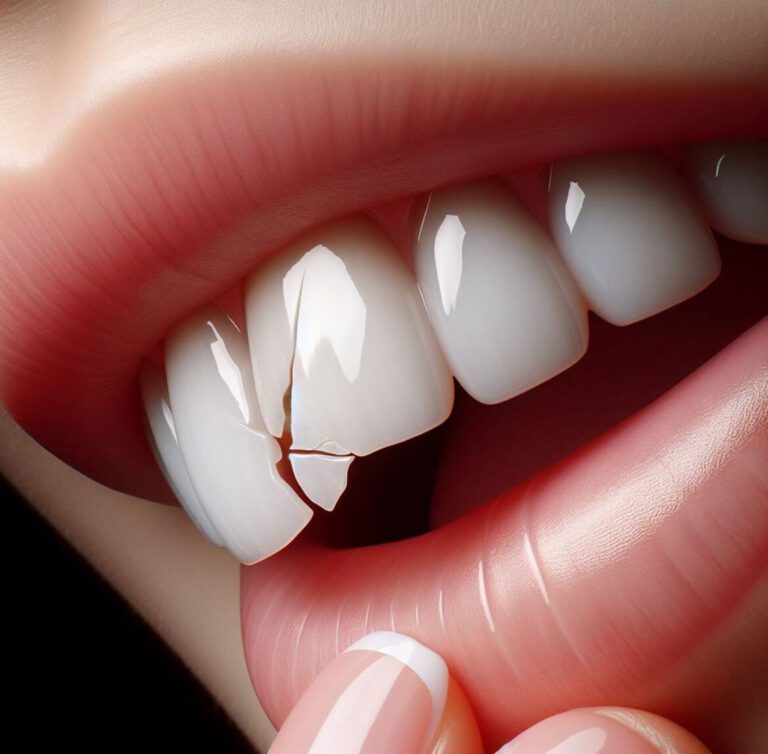Discover the modern, tooth-preserving solution that’s challenging the porcelain veneer industry
More people are waking up to the harsh reality of porcelain veneers: the drilling, the permanent damage, the high cost, and the regret that often follows years later.
Marketed as the ultimate solution for a perfect smile, porcelain veneers have dominated cosmetic dentistry for decades but at what cost to patients?

Even so-called “no prep” veneers are not as harmless as they sound. They’re still irreversible, leaving people with teeth that can never return to their natural state once replacements are needed
As this truth becomes more widely known, patients are starting to explore better options, like composite resin veneers.
In this article, we answer the questions people are now asking:
- What are composite resin veneers, and how are they different from porcelain?
- Are composite veneers worth it?
- How much do composite veneers cost?
- Do composite veneers last as long as porcelain veneers?
- Can composite veneers be removed, and are they safe?
- Do composite veneers hurt or look fake?
- Can composite veneers be whitened if they stain?
We will also break down the difference between composite bonding and composite veneers, explain direct versus indirect composite bonding, and highlight the benefits of enhanced composite resin veneers, a premium in-mouth technique that rivals porcelain without damaging your natural teeth.
What Are Composite Resin Veneers?
Composite resin veneers are thin layers of tooth-colored resin sculpted directly onto the surface of your natural teeth.
Unlike porcelain veneers, which are fabricated elsewhere and require grinding down healthy enamel, composite veneers are applied chairside and built up in real time.

When people refer to “composite veneers,” they’re almost always talking about direct chairside veneers , applied and shaped directly in the patient’s mouth during a single visit.
Indirect composite veneers, on the other hand, are made outside the mouth and then bonded to the teeth later. While indirect methods exist, they are rarely used today.
You’ll also see terms like composite resin, composite veneers, composite bonding, and other variations.
Technically there are differences, but in everyday use, most people,including many dentists, use these terms interchangeably.
It’s also important to understand that there are many levels of composite resin veneers, and the quality can vary significantly depending on the dentist’s skill, materials, and technique.
Knowing the differences and asking the right questions can make all the difference in your outcome.
Composite resin can correct discoloration, chips, gaps, and misshapen teeth. Because the treatment is more conservative than traditional options, composite veneers have become a popular choice for those seeking a natural-looking smile without permanently altering their healthy teeth or dealing with the aches and long-term issues often associated with porcelain veneers, as discussed here.
Traditionally, both composite bonding and composite veneers required some form of tooth preparation, such as etching or lightly roughening the surface, to help the material bond securely.
In these cases, the tooth was slightly altered, though not anywhere near the degree seen with porcelain veneers.
However, newer techniques that we will discuss later use an advanced approach called enhanced composite resin veneers.
This revolutionary technique involves no etching, no drilling, and no shaving of the natural tooth at all. When done properly, it avoids unnecessary alteration and is theoretically reversible on paper.
Composite Bonding vs. Composite Veneers
Composite bonding usually refers to smaller, localized treatments such as repairing a chip or closing a minor gap using tooth-colored resin.
Composite veneers cover the entire front surface of the tooth with resin, creating the appearance of one smooth, continuous piece. In general, if the composite covers more than about 30% of the tooth, it is often considered a veneer, although this percentage can vary.
While both techniques use the same material, veneers involve more composite and typically provide more comprehensive, full-coverage results.
Some dentists may promote full-coverage treatments as “cosmetic bonding” to avoid the negative associations that sometimes come with the word “veneers.”
This is why it is important to ask clear questions and understand exactly what type of treatment you are receiving.

Direct vs. Indirect Composite Veneers/Bonding
- Direct composite veneers or bonding are applied in a single visit, sculpted and hardened directly on the tooth.
- Indirect composite veneers or bonding involve creating the restoration outside the mouth based on an impression or digital scan, then bonding it to the tooth at a later time.
- While still effective, this approach is less commonly used today due to significant advancements in direct techniques.
How Much Are Resin Veneers?
Cost is a major factor when choosing a smile makeover. If you have searched “how much are resin veneers,” you are not alone.
Traditional composite bonding, used for small touch-ups like chips or gaps, typically costs $250 to $500 per tooth, depending on how much material is applied.
Composite veneers, which cover the full front surface of the tooth, usually range from $500 to $1,000 per tooth, making them a more affordable option compared to porcelain veneers, which often cost between $2,000 and $3,000 per tooth.
Enhanced composite resin veneers, the kind that do not stain, involve no drilling, and can go toe-to-toe with porcelain in both appearance and durability, typically range from $1,500 to $2,500 per tooth, depending on the dentist and technique.
| Type of Treatment | Details | Cost Per Tooth (USD) | Notes |
|---|---|---|---|
| Traditional Composite Bonding | Small fixes (chips, gaps) | $250 to $500 | Best for minor cosmetic repairs |
| Traditional Composite Veneers | Covers full front of tooth | $500 to $1,000 | Prone to staining and chipping |
| Enhanced Composite Resin Veneers | No drilling, highly aesthetic, stain-resistant | $1,500 to $2,500 | Advanced technique, artistically layered |
| Porcelain Veneers | Permanent, high-end aesthetic option | $2,000 to $3,000 | Irreversible, requires enamel removal |
| Full Set of Enhanced Composite Veneers | Usually upper 8 to 10 teeth | $15,000 to $24,000 total | Cost varies by dentist skill and location |
It is important to find a dentist who specializes in enhanced composite resin veneers and not to confuse this advanced method with traditional composite bonding or veneers, which differ in technique, durability, and overall aesthetic result.
That said, they do come with a premium price. In the United States, a full set of enhanced composite veneers typically costs between $15,000 and $24,000, depending on the provider’s experience, location, and technique.
While you may find cheaper options abroad, be cautious—quality, material, and long-term outcomes can vary widely, so choose your provider carefully
Inside Tip: Traditional composite veneers are becoming less common, as they tend to stain, can chip more easily, and do not last as long as the new enhanced composite resin veneers, which offer better durability and aesthetics.
Are Composite Veneers Worth It?
In the past, traditional composite bonding or veneers typically lasted around 5 to 7 years before showing signs of wear, staining, or needing replacement.
Enhanced composite veneers, made with advanced materials and applied using layered artistic techniques, have significantly improved both durability and appearance.

While many still estimate a lifespan of 10 to 15 years, real-world results show they can last 20 years or more when done properly and maintained with care.
The data is still emerging, but there are already documented cases of enhanced composites lasting over two decades when every step is followed precisely and no shortcuts are taken.
If you have searched terms like “composite veneers after 5 years” or “composite veneers after 10 years,” you will see mixed results.
While some cases look impressive and have held up well, others reveal chips, cracks, staining, and complaints about bonding failure or short lifespan.
These disappointing outcomes are often tied to traditional materials, rushed procedures, or a lack of expertise.
This is why it is essential to confirm that you are receiving true enhanced composite veneers, not outdated techniques marketed under a modern label.
Some newer dentists may advertise enhanced veneers but cut corners during the process.

Real enhanced composites require top-tier materials, meticulous layering, and a high level of skill. Choosing the right provider is critical to achieving long-lasting, natural-looking results.
Inside Tip: Many dentists who offer enhanced composite resin veneers do not always call them that. Instead, they often brand the technique with names like Puresmile, Halo, or Method. Some even claim to have “created” their version, but that’s still up for debate.
At the core, these are enhanced composites using similar materials and techniques. While the origin is contested, Dr. Marshall Hanson is often credited with developing this approach, and many others have since modified and personalized it.
We can break down the differences and claims more fully at a later time. For now, be sure to ask the right questions so you know exactly what you’re getting.
Do Composite Veneers Last?
The lifespan of composite veneers depends on the materials used, the technique applied, and the skill of the provider.
Traditional composites were known to wear down within 5 to 7 years, often showing signs of staining, chipping, or loss of shine. But enhanced composite veneers have changed that.
Thanks to improved resin technology and advanced layering methods, many of today’s enhanced composite veneers are lasting well over a decade, and in some documented cases, more than 20 years. Results can vary based on how precisely the veneers are done and how well they are cared for over time.

When placed correctly with no shortcuts, enhanced composites can offer a durable, long-lasting, and natural-looking solution.
An important factor in extending their lifespan is daily care. Using a toothpaste with a Relative Dentin Abrasivity (RDA) under 70 can help prevent surface wear and preserve the polish of your enhanced composite veneers. For more information, check out our Toothpaste Guide
Choosing the right dentist, committing to proper at-home care, and avoiding harsh products can make all the difference in how long your enhanced composite veneers truly last.
Can Composite Veneers Be Removed?
It depends on the type of composite used and how the procedure was done. One potential advantage of enhanced composites is that they may be reversible.
Because little to no enamel is removed, there is a chance the veneers can be taken off without significantly altering the natural tooth.
This sets them apart from porcelain veneers, including no-prep porcelain veneers which still require strong bonding to ceramic and are considered irreversible. In contrast, some documented cases have shown enhanced composites being removed with the natural tooth fully preserved, but this depends on the case and requires an experienced and highly skilled dentist.
With traditional composite veneers or bonding, where etching or light shaving of the enamel was involved, full reversal is less likely. The tooth may still require minimal composite refinishing, although any visible change is often very subtle and only noticeable under magnification.
While outcomes vary, the potential for reversibility is one reason enhanced composites are seen as a more conservative and tooth-friendly option.
Can Composite Veneers Be Whitened?
Not in the traditional sense. While natural teeth respond to whitening agents like peroxide, composite resin does not.
If staining or discoloration occurs, the material cannot be bleached but can often be polished or replaced by your dentist to restore its original appearance.

That said, enhanced composite veneers are more stain-resistant than older versions, especially when applied using advanced layering techniques and high-quality materials.
In fact, while porcelain veneers are often marketed as highly stain-resistant, data shows they are not completely immune to staining, especially at the edges or over time.
This is why properly done enhanced composites are now considered “stain resistant”
Do Composite Veneers Hurt?
Not usually. One of the biggest benefits of composite veneers is that they are typically painless.
Most procedures do not require anesthesia, drilling, or invasive tools, making them a comfortable option—especially for people with sensitivity.

Even in traditional composite bonding, where there may be light etching or a slight surface shave, the process only affects the outermost layer of enamel if done correctly. There is no deep cutting or exposure of sensitive areas.
With enhanced composite veneers, there is often no shaving, no scratching, and no enamel removal at all. The resin is simply layered onto the existing tooth, so the procedure is completely noninvasive and pain free.
In contrast, porcelain veneers usually involve drilling and permanent enamel removal, which can expose the dentin layer and lead to significant sensitivity or discomfort.
This is one reason why many patients are turning to composite as a gentler, more tooth-friendly option

Do Composite Veneers Look Fake?
In the hands of a skilled dentist, composite veneers can look incredibly natural when applied with proper technique, including layering, color blending, and surface texture that mimics real enamel.
That said, anything can look fake if done poorly.
Even the most talented dentists can produce faking looking results if there is a disconnect between the patient’s expectations and the final design. This is why clear communication is just as important as technical skill.
Typically, the newer enhanced composites tend to look more authentic because they are layered by hand with precision and artistry, allowing for a more natural finish.

It is always a good idea to review a dentist’s portfolio. Check their Instagram or website for before and after photos, but be cautious. Some images may be edited, filtered, or taken in ideal lighting. When possible, ask to see real patient photos rather than studio shots to get a more accurate sense of their work
Are Composite Veneers Safe?
Yes, composite veneers are safe. The resin material is biocompatible and has a long history of use in restorative dentistry.
The key safety advantage comes with enhanced composite veneers, which are purely additive. This means they are applied directly onto the tooth without any drilling, etching, or shaving of the natural enamel.

Traditional composite techniques may involve light surface preparation, but enhanced composites avoid altering the tooth altogether, making them a more conservative and tooth-friendly option.
That said, some patients have raised concerns about the potential presence of BPA or BPA-related compounds in certain composite resins and bonding agents.
While many products are labeled BPA-free, they may still contain related derivatives that could release trace amounts of BPA over time.
Insider Tip: If you’re concerned about potential hormone-disrupting chemicals, ask your dentist directly what products they use and whether they contain any BPA derivatives.
Many dentists today are switching to safer, BPA-free materials, but not all. Be proactive and ask for biocompatible options that align with your health priorities.
Who Can Do Composite Veneers?
Believe it or not, any dentist can call themselves a “cosmetic dentist” because cosmetic dentistry is not recognized as a specialty by the American Dental Association.
It is the wild west of dentistry. Anyone can market veneers, regardless of skill or experience.
That is why it is up to you to choose wisely.

Look for a dentist who:
- Has hands-on training in composite bonding, especially with experience using Cosmedent
- Shares real before and after photos, including real world images and not just polished studio shots
- Kois-certified, with advanced, research-based training in minimally invasive dentistry
- Believes in preserving natural enamel, not over-prepping teeth for profit
- Trust your gut. If too many patients are posting glowing video reviews, it is fair to question whether they were offered a discount or some form of compensation.
Composite veneers require artistic technique and ethical judgment, not just a license and a drill.
Insider Tip: Be wary of any dentist who offers porcelain veneers, even “no prep”, while also performing enhanced composite veneers.
That mixed approach often suggests they haven’t fully committed to or mastered the art of conservative, enamel-preserving dentistry.
Top cosmetic dentists are fully committed to preservation. They do not offer porcelain as an option for healthy teeth because they have mastered enhanced composite techniques, including replacing old porcelain or crowns with natural-looking composite. That level of skill and consistency is the mark of real expertise.
Final Thoughts
The era of blindly trusting porcelain veneers as the gold standard for a perfect smile is coming to an end.
Patients are waking up to the risks, the irreversible drilling, the long term damage, the high cost, and the regret that often follows. Even so-called “no prep” veneers are not as harmless as advertised.
Enhanced composite resin veneers offer a safer, more conservative alternative.
When done properly, there is no drilling, reversible in theory, and capable of delivering stunning, long lasting results that rival porcelain without sacrificing your natural teeth.
But results depend on more than the material. Composite veneers require artistic skill, ethical judgment, and a commitment to preservation.
These are qualities that not every cosmetic dentist has. In an industry with no official specialty in cosmetic dentistry, it is up to you to ask the right questions, verify credentials, and trust your instincts.
If you are considering a smile makeover, remember this: real enamel is irreplaceable. Choose a provider who respects that truth, someone who preserves what nature gave you while enhancing it with skill and care.
When done properly, enhanced composite veneers are not just a treatment. They are a philosophy.
Disclaimer:The information provided is for educational and informational purposes only and does not constitute medical or dental advice.
If you have questions about this article, need help understanding your options, or want to know what to ask during a consultation, we’re here to help. Just leave us a message — even a quick question like:
- “Do you know any qualified dentists who offer enhanced composite resin veneers?”
- “How do I know if this is right for me?”
- “What are the typical costs among providers for enhanced composite resin veneers?”
- “What should I ask my dentist before starting treatment?”
- “Is there a way to tell if my teeth are healthy enough for this type of veneer?”
- “What’s the difference between traditional bonding and enhanced composite resin?”
Every person’s case is unique, and while we’ll do our best to answer your questions and share helpful insights, always consult a licensed dental professional before making any treatment decisions.





